Image derived: Gursky, Andreas. Dubai World III. 2008. Photograph. ASXWeb. 25 Nov 2013. <http://www.juancole.com/2012/07/dubai-world-iii-gursky-photograph.html>.
I think this photograph is very interesting in regards to the concept that it presents. This piece presents a photograph of an actual project that was created. This is a photograph of a group of artificial islands that lies right off of the coast of Dubai, and the group of islands are roughly shaped into the continents of the world. The islands were created out of sand from Dubai's ocean front. As of late, the islands are slowly beginning to sink and this project is still a controversial issue. I like this photograph, because when I look at this piece, I think of the idea of global warming and humanity doing things that are slowly killing our Earth. I also like this piece, because it is very simplistic, but it conveys a lot of meaning that also brings a global issue to light. The piece itself consists of similar shapes that create the overall figure/shape of the seven continents. There is a lot of repetition through the use of those shapes, which creates unity. The way that the piece was photographed also creates an asymmetrical balance, yet emphasizes this shape. There is also a high contrast between the shapes and the ocean, which highlights the shapes and makes them stand out a bit more. The emphasis and simplicity of this piece works very well, because it does a good job at conveying the message that with the more and more technology that we use daily, the more we are destroying our planet and ruining our Earth. For example, the more cars we use, the more carbon emissions get into the environment, raising the global temperature, causing the polar ice caps to melt, and affecting global ecosystems and food chains, causing animals to die off, etc. It's a never ending cycle. I feel
Image derived: Gursky, Andreas. Dubai World III. 2008. Photograph. ASXWeb. 25 Nov 2013. <http://www.juancole.com/2012/07/dubai-world-iii-gursky-photograph.html>.
0 Comments
I admire this piece for a few different reasons. I think that this piece really works, because the angle is a close up and it captures many of the different leaves, which creates a feeling of repetition throughout the piece, which also creates unity. I also really admire the color usage in this piece and I feel that it works really well. The hues in this piece work really well, because there is a repetition of the different hues that repeat throughout the piece, which also adds on to the feeling of unity and pulls the piece together. I also feel that the focus of this image makes it interesting, because the leaves that are closer are more visible and detailed while the leaves that are further away are blurred out, drawing your eye to those leaves that are nearer to the lens. I admire this piece a lot because it captures nature in an interesting and unique way. I think that the angle captures the details of the leaves that makes the piece really interesting. It is intruiging, because people do not take the time to look at the smaller details that nature presents, and this piece does a good g
Image derived from: Burkett, Christopher. Resplendent Leaves at Sunset. 2002. Photograph. After Image Gallery, Sunset, Oregon. Web. 21 Nov 2013. <http://www.afterimagegallery.com/burkettresplendentleaves.htm>. I really admire the work of Lucian Freud, especially his unique portraiture. Being very drawn to portraiture already, this piece really stands out to me. I like this piece for the technique. This piece presents a traditional style, but in a twisted way. The piece itself is balanced very well through the angle that was chosen.The portrait exposes the subject in a traditonal-like way, capturing all of the features of the subject from a frontal-type view. This piece starts to become non-traditional through the palette/hue choices, and the structure of the facial features. For example, the eyes look a bit cartoon-like and slightly distorted. The eyes themselves appear to be very large (wide-eyed, rounded - making them very cartoon-esque). The face itself is very rounded, which could be realistic, but in real life this is not usually the case. The hues chosen for this piece are also a bit off, and the palette is not traditional. The whites appear to be slightly toned with a blue, and the darker hues on the left side of the face are toned down, and are not as vibrant in regards to skin tone. I admire this piece for the idea that it captures the subject in a realistic way. All of the details of the face are included, the tones and lighting is correct, the hair is detailed down to the wire, etc. I admire the lack of color in this piece, and how the facial expression is not happy - creating a specfic mood. The subject appears to be in thought or pondering on something, and the chosen color palette does a good job at capturing this. I love how this piece emphasizes and focuses on emotion, which is very inspiring to me.
Image derived from: Freud, Lucian. Portrait of Francis Bacon by Lucian Freud. 1952. Painting. Ananas à MiamiWeb. 20 Nov 2013. <http://2.bp.blogspot.com/-lbgZuoG83PI/TdLTCaax4eI/AAAAAAABbCs/yOa1AO4JAuU/s640/Lucian Freud - Francis Bacon 1952.jpg>. Browsing through art work online, I came across photography Liu Bolin (Japanese). A lot of his works revolve around a theme of blending in or disappearing into the objects that surround us. This photography really appeals to me and I think that it is very impressive. For starters, I feel that the angle that this photograph was captured at really makes it interesting. There is an entirely new perspective through the idea that we not only visibly see the figure blending into the city, but we see the city, the tall buildings, and the potential size of the city. I also think it is interesting that there are other individuals in the background who are minding their own business and doing whatever it is that they are doing. This piece is very conceptual, and it sends a very inspirational message (this piece really speaks to me). Even in one of the biggest cities (assuming that this is New York), an individual can get lost in the swarm of people. People can get lost in their city, in humanity, in the things that they do - addictions, bad habits, etc. We cannot let ourselves get lost and lose our voices. We cannot let ourselves blend into society, but we rather have to stand out and voice our opinions. We need to stand our and contribute positively to this world before it is too late. We all have one life to live, and we all have one shot at doing so. Asides the conceptual meaning that I take away from this piece, I think that the overall po
Image derived from: Bolin, Liu. Hiding in New York No. 4 - Ground Zero. 2011. Photograph. Eli Klein Gallery, New York, New York. Web. 20 Nov 2013. I really appreciate and admire this piece mainly for its use of color and shape. I love the abstract feel that this piece presents, and I think that the title of the piece is interesting with the subject matter that the piece presents. In a way, I feel that the title is very contradicting in a sense. The internet defines the term Stowaway is an individual who secretly boards public transportation without paying and without being detected/noticed. The speed of light also travels so fast, that we as humans do not physically see it. I admire this piece because It is an interpretation of the speed of light and what it would or potentially could look like it if it was actually visible to the human eye. When I think of light, I think of colors and how different colored objects and things model light and reflect it. In this piece, since the speed of light moves so fast, the objects becomes blurred lines and appear to be very abstract, organic-like figurative forms of color. I feel that this piece makes a lot of sense in terms of the approach to the subject matter combined with the chosen title, and I think it is a great depiction., This piece goes "outside of the box" and depicts subject matter and questions our existence and the way that things work a bit, which I think is an interesting concept. This piece is great because it is not simply a portrait or a depiction of a type of subject matter that we are exposed to every day and th I really admire the work of Dubuffet, because it is very contemporary and abstract, and it strays away from the "norms" that are often seen in art (portraiture, traditional portraiture, traditional sketches, etc). His work is very free and almost child-like in a way (through the lines, lack of color - the idea of coloring in shapes.. this is very similar to the concept of a child and their coloring book). The piece itself presents a feeling of unity through the repetition of the different elements that are incorporated (repetition of the lines, repetition of similar patterns, placement of the hues throughout the piece). Viewers see similar elements throughout the entire piece, which gives off a feeling of unity and balance. I also think it is interesting that the red and blue hues were chosen to be used in this piece. The choice of hues clash against each other. The red hue is warm, while the blue hue is cool, creating a high contrast within the piece. The piece itself reminds me of street art or graffiti in a way. I really admire the work of Dubuffet, because he makes you think about what beauty really I really admire and appreciate this piece for it's uniqueness. I feel that this piece is very contemporary, yet it has a cultural aspect/twist to it (Japanese). I like this piece because there is a type of juxtaposition that is occurring and in a sense it is almost contradictory in a way. When we think of skulls, we think of death and darkness, but the skulls are juxtaposed with brighter colors. When we think of brighter colors, we think about happiness an the brighter aspects of life. To me, this piece is conveying the idea of not being afraid of death, and embracing it or at least learning how to do so. I really admire the different elements and principles presented in this piece as well, and I feel that they work really well together to create a great composition. The repetition of the skull (symbol) is crucial to creating a sense of unity. The emphasis on the skulls in the center of the piece itself also creates a focal point. The idea of repetition used in this piece also emphasizes the idea that death is never-ending, and it is constantly endured in the world. I also think it is significant that the colors used in this piece (the water color-like hues) are faded, because eventually in reality everything will die off and people and things fade away. I really like this piece, and I think it is different, but I think it works very well.
Image derived from: Murakami, Takashi. Who's Afraid of Red, Yellow, Blue and Death. 2010. Painting. Gagosian GalleryWeb. 14 Nov 2013. <http://www.gagosian.com/artists/takashi-murakami/selected-works>. I really admire this piece for the concept of portraiture, as well as the technique and pose presented in the piece. I really like this portrait, because it captures emotion in a unique way. The style to me is very significant to the piece. The portrait itself shows all of the detail that a portrait should (lens reflections, shading to give the piece a bit of depth, etc.), yet the style of the piece itself is still a bit flat (shading is present, yet there is lack of detail.). I admire this technique and style combined with the pose of the figure, because I feel that the lack of having too much detail creates an emphasis on the pose and the emotion that the subject itself is portraying, which I feel is very significant to the success of this piece. I also think that the blue hue chosen for the background combined with the red conveys emotions of anger and sadness - which works very well with the expression of the subject. Typically when we think of individuals who are upset or angry, they tend to cover their faces in frustration or because of sadness. I really admire this piece and I think the portrait itself is great.
Image derived from: Katz, Alex. Ted Berrigan. 1967. Painting. Art ObservedWeb. 14 Nov 2013. <http://artobserved.com/2010/01/go-see-kleve-germany-a-forty-work-retrospective-of-the-alex-katz-at-museum-kurhaus-kleve-through-feb-21-2010/>. I really like and admire this piece A LOT, and I feel that it is not only very different from a lot of the other works that I have been looking at and blogging about lately, but it is VERY original and unique to the artist. I think the use of charcoal in this piece is outstanding, because a lot of the time when artist use charcoal in their pieces, you can visibly see and tell that it is charcoal that is used through the texture that the medium creates. In this piece, you cannot tell that the sketch was made from charcoal at ALL, and it looks very surreal and realistic. I also really like the choice of the angle of the shark that was chosen in this piece, because not only are viewers exposed to a lot of the inner details of the shark, but it gives the illusion of a black abyss that does not end...almost as if one is swallowed by the shark and continuously falling deeper and deeper into the shark. I am usually drawn to works that use a lot of color and abstraction, but this work in particular really stands out to me. The use of black and white is also VERY effective, and the shading created through the charcoal is outstanding. All of the slightest details are visible, which makes the piece itself more appealing, especially with such a unique angle of the shark - the details are critical in understanding what the subject matter is and conveying this in an effective and efficient way.
Image derived from: Longo, Robert. Shark Charcoal Drawings. N.d. Drawing. My Modern Met. Web. 12 Nov 2013. <http://www.mymodernmet.com/profiles/blogs/hyper-realistic-charcoal-shark-drawings>. I really admire fishes work for her whimsical use of color combined with the idea of still life images. Interestingly enough, I thought that when I was first viewing her work, and then I went on to actually read her artist biography, which states " A Janet Fish painting is a celebration of light and color that continually delights the eye and engages the mind. Fish invigorates the still life form, both by the energetic way she paints and the often witty and ironic combinations of objects that she depicts". I think that her color usage combined with the traditional idea of still life is very inspirational because it puts a new twist on an old practice or theory. The hues that she incorporates into her work are very eye-catching, yet they work together very well. Her main focus is also on light and how the objects portray the light. The use of detail in this piece also really is significant and catches my eye, because the smallest and slightest details are what separate Fish's still life paintings from those still life paintings that other artists create. She captures every single detail presented in the fabrics, and on the objects, which gives it a very 3-dimensional experience on the 2-dimensional surface. The use of contrast between hues in this piece also makes is very successful, because the objects are easily interpreted. I this piece in particular, because even though the piece presents simple every day objects (still life) there is an energy that viewers feel through the excellent usage of hue, extravagant detail, juxtapositioning of the objects, as well as the use of asymmetrical balance (this creates a unity - there is not an overwhelming feel of the piece with all of the detail. In other words, the placement of the objects and balance creates a more at eImage derived from: Fish, Janet. Black Bowl Red Scarf. 2007. Painting. Dc Moore Gallery. Web. 11 Nov 2013. <http://www.dcmooregallery.com/artists/janet-fish>. Quote derived from: Fish, Janet. "Artist Biography." Dc Moore Gallery. n. page. Print. <http://www.dcmooregallery.com/artists/janet-fish>. |
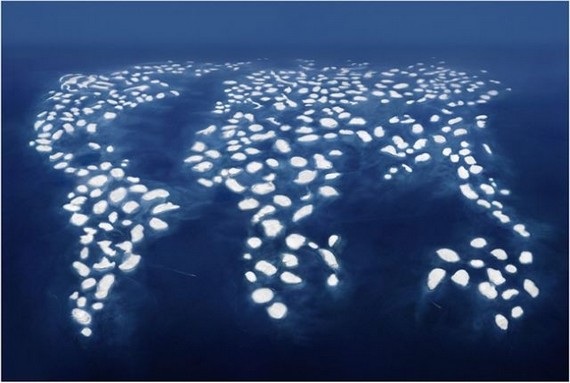
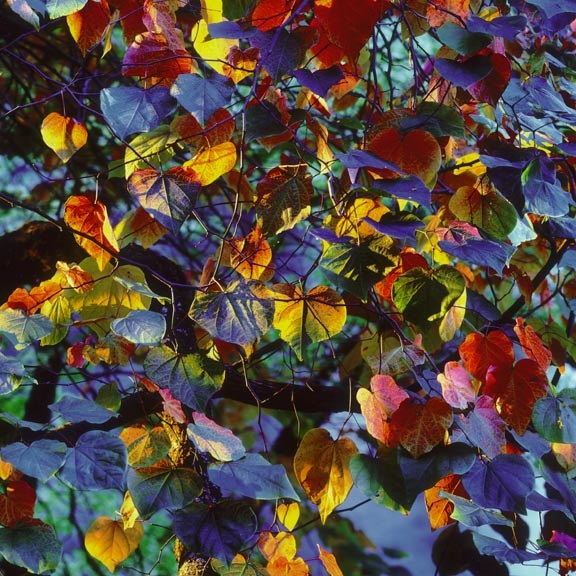
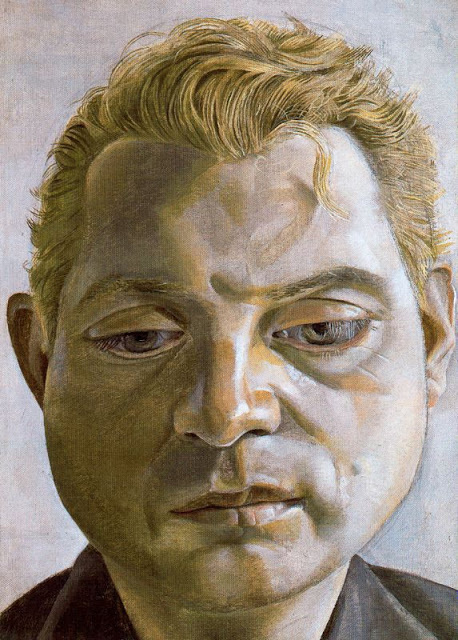
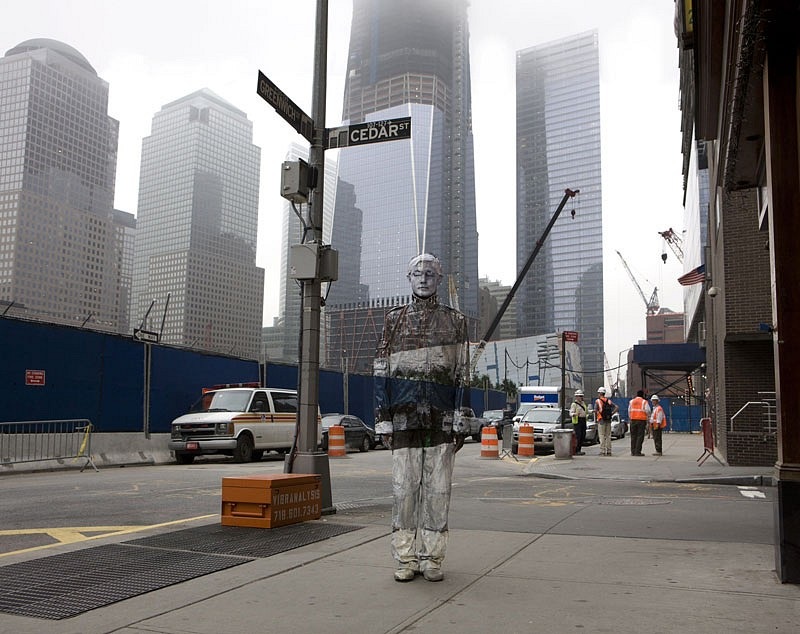


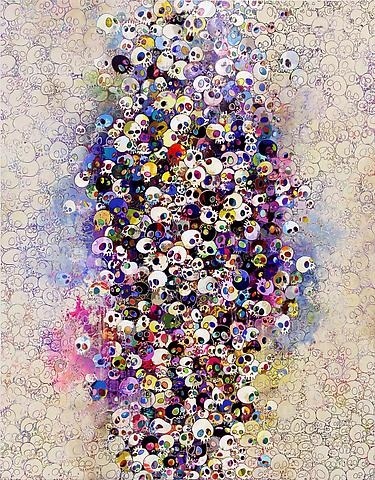
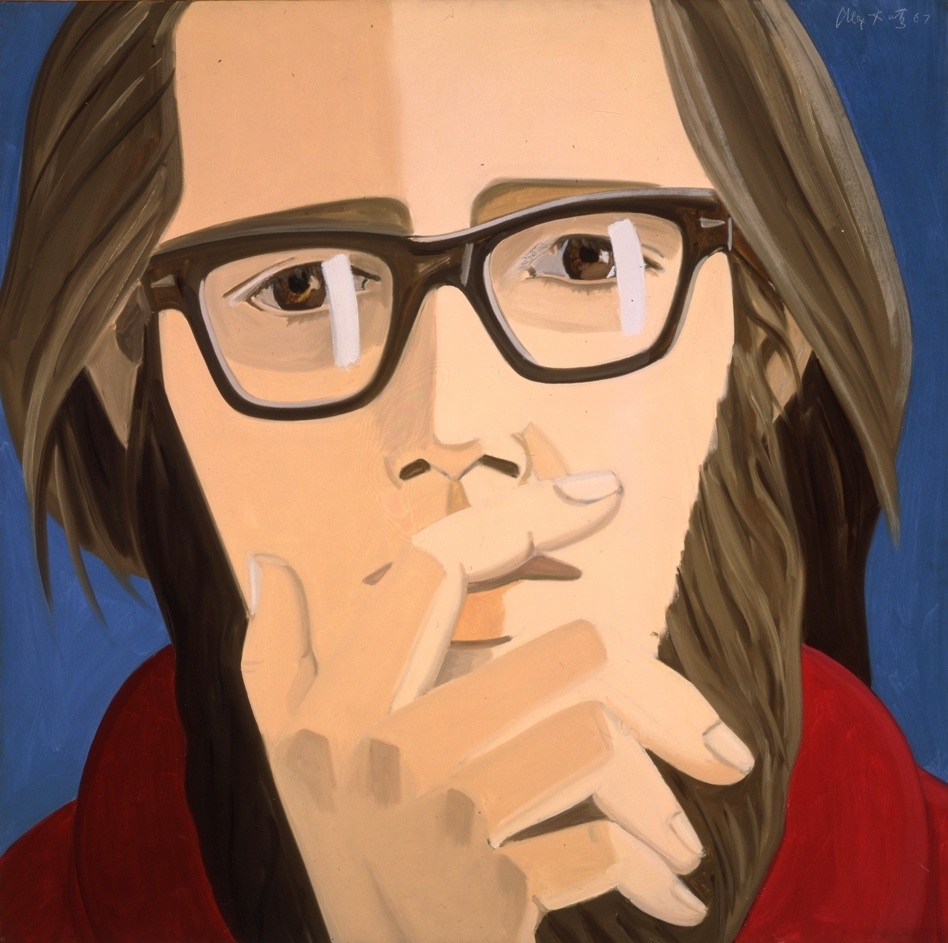
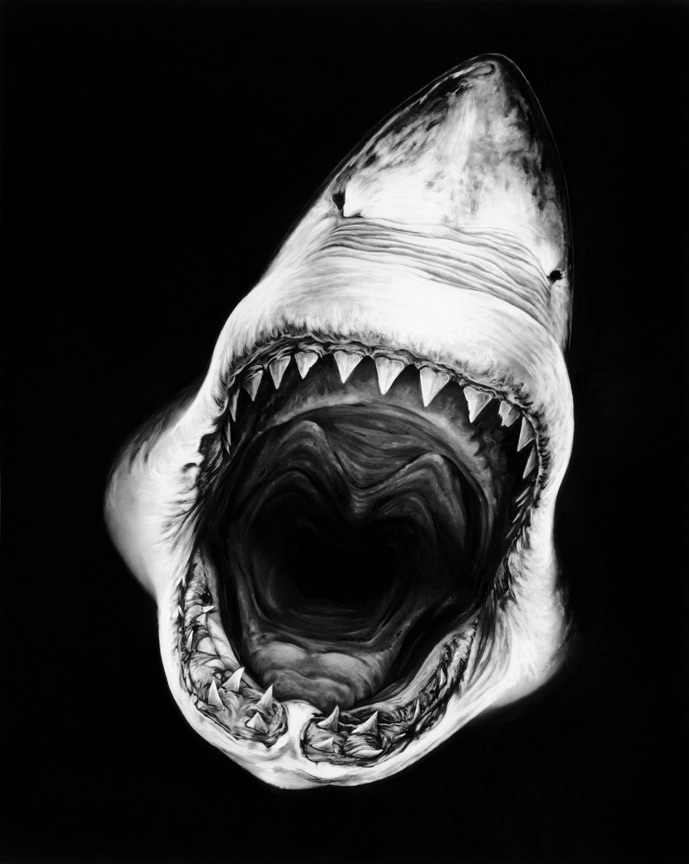
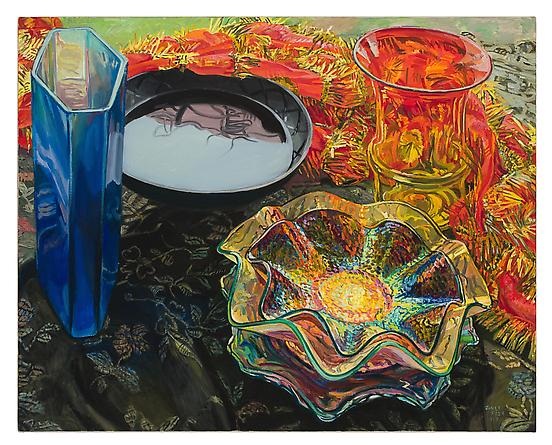
 RSS Feed
RSS Feed